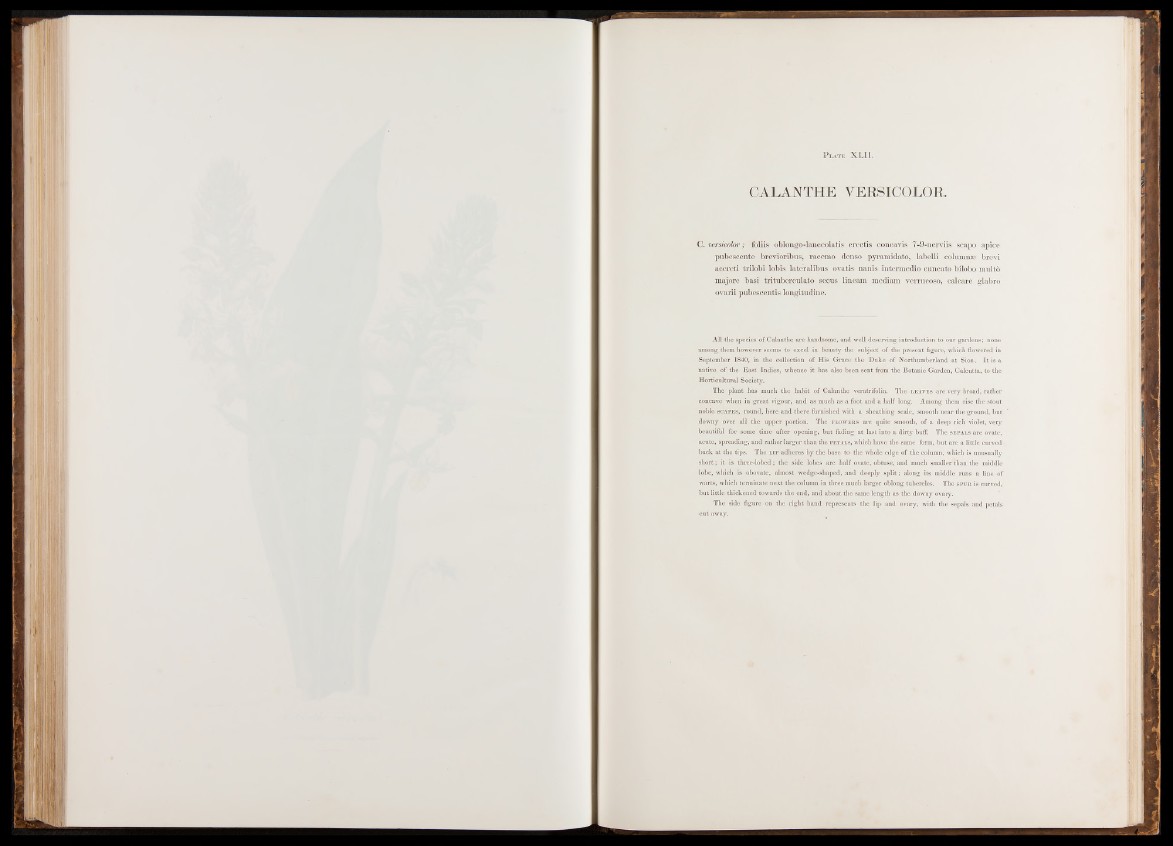
P late XLII.
CALANTHE VERSICOLOR.
C. versicolor ; foliis oblongo-lanceolatis erectis concavis 7-9-nerviis scapo apice
pubescente brevioribus, racemo denso pyramidato, labelli columnse brevi
accreti trilobi lobis lateralibus ovatis nanis intermedio cuneato bilobo multô
majore basi trituberculato secus lineam mediam verrucoso, calcare glabro
ovarii pubescentis longitudine.
All the species of Calan the are handsome, and well deserving introduction to our gardens; none
among them however seems to excel in beauty the subject of the present figure, which flowered in
September 1840, in the collection of His Grace the Duke of Northumberland at Sion. It is a
native of the East Indies, whencé it has also been sent from the Botanic Garden, Calcutta, to the
Horticultural Society.
The plant has much the habit of Calanthe veratrifolia. The leaves are very broad, rather
concave when in great vigour, and as much as a foot and a half long. Among them rise the stout
noble scapes, round, here and there furnished with a sheathing scale, smooth near the ground, but
downy over all the upper portion. The flowers are quite smooth, of a deep rich violet, very
beautiful for some time after opening, but fading at last into a dirty buff. The sepals are ovate,
acute, spreading, and rather larger than the petals, which have the same form, but are a little curved
back at the tips. The lip adheres by the base to the whole edge of the column, which is unusually
short; it is three-lobed ; the side lobes are half ovate, obtuse, and much smaller than the middle
lobe, which is obovate, almost wedge-shaped, and deeply split ; along its middle runs a line of
.warts, which terminate next the column in three much larger oblong tubercles. The spur is curved,
but little thickened towards the end, and about the same length as the downy ovary.
The side figure on the right hand represents the lip and ovary, with the sepals and petals
cut away.